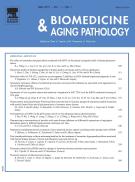Synthesis, in silico preclinical evaluation, antidepressant potential of 5-substituted phenyl-3-(thiophen-2-yl)-4,5-dihydro-1h-pyrazole-1-carboxamides - 22/10/14
 , Jerad Suresh b, S. Anbazhagan c
, Jerad Suresh b, S. Anbazhagan cAbstract |
In the context of the discovery of new potential antidepressant candidates and in the light of promising antidepressant action of pyrazoline nucleus, a new series of thiophene bearing pyrazoline carboxamides were synthesized and examined for their antidepressant effect by two behavioural models viz. Forced Swim Test (FST) and Tail Suspension Test (TST). Neurotoxicity of the compounds were accessed by rotarod test. The titled compounds were characterized by IR, 1H NMR, 13C NMR and mass and elemental analyses. The preclinical evaluation the compounds were predicted by in silico toxicity, blood-brain barrier and human oral absorption. In this series, 5-(3-nitrophenyl)-3-(thiophen-2-yl)-4,5-dihydro-1H-pyrazole-1-carboxamide (TSe) reduced immobility time 60.43 and 63.47% in both FST and TST, respectively at 10mg/kg dose level when compared to the standard imipramine. Moreover, it was observed that the compounds possessing electron-releasing groups such as dimethyl amino, methoxy and electron-withdrawing chlorine in the 4th position of aromatic rings of the scaffold showed good antidepressant activity when compared to the pyrazolines having no substituents on the phenyl rings. All the compounds in the series have passed neurotoxicity test.
Le texte complet de cet article est disponible en PDF.Keywords : 2-Acetyl thiophene, Pyrazolines, In silico toxicity prediction, Antidepressant
Plan
Vol 4 - N° 4
P. 327-333 - octobre 2014 Retour au numéroBienvenue sur EM-consulte, la référence des professionnels de santé.
L’accès au texte intégral de cet article nécessite un abonnement.
Déjà abonné à cette revue ?

